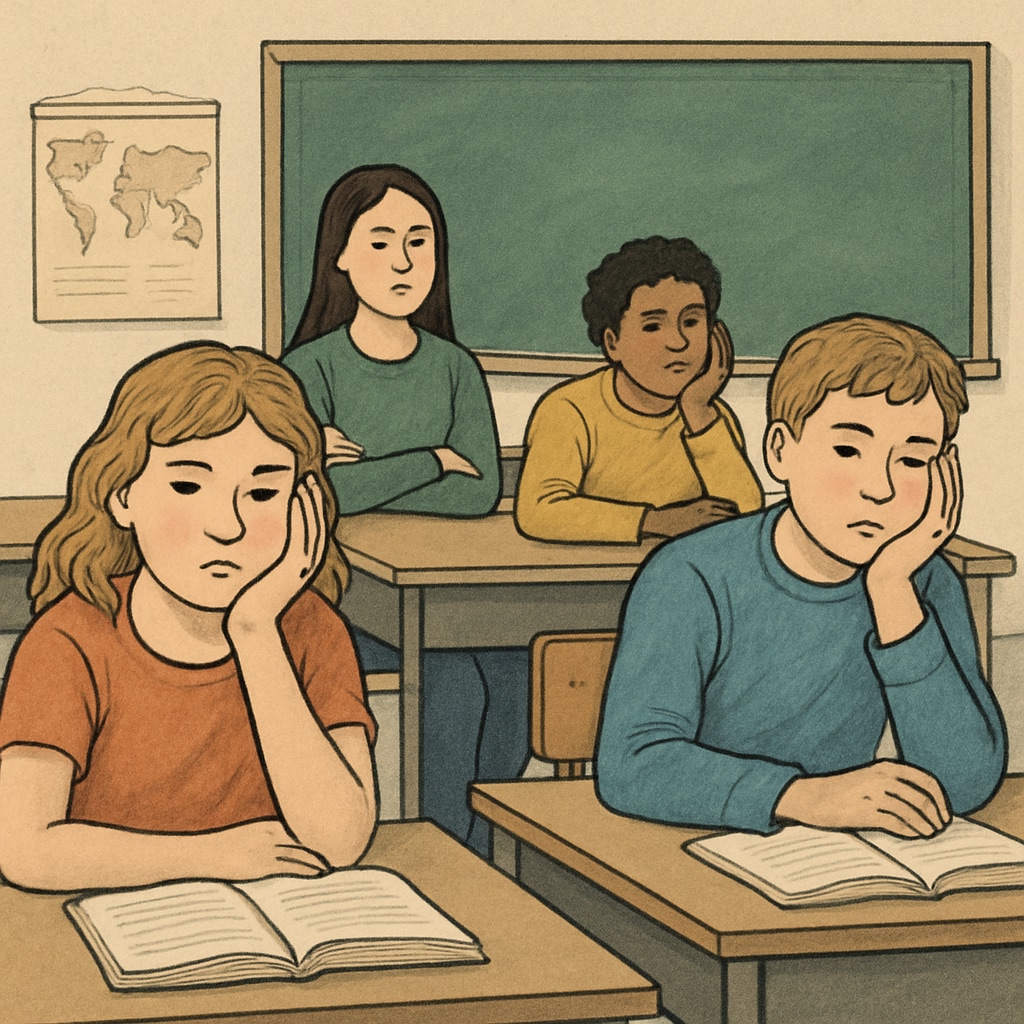Student boredom in K12 classrooms has emerged as a significant yet often overlooked issue within modern education systems. Research spanning various countries and cultures highlights that boredom is a universal challenge affecting student engagement, academic performance, and overall classroom experiences. This article dives into the prevalence of boredom, its variations across grade levels, and the critical insights it offers for education reform.

How Common Is Student Boredom in K12 Classrooms?
Boredom in education is not confined to a single region or demographic; it is a global phenomenon. Studies from the United States, Europe, and Asia consistently show that a significant proportion of students report feeling bored during school hours. For example, a survey conducted by Gallup revealed that nearly 70% of high school students in the U.S. experienced boredom at least once daily. The situation is not dissimilar in other countries where traditional teaching methods dominate, often leading to disengagement.
- Elementary school students tend to experience boredom less frequently, as interactive teaching methods are more common at this stage.
- Boredom peaks in middle and high school, where standardized testing and lecture-heavy instruction prevail.
As students progress through their academic journey, the monotony of repetitive tasks, lack of autonomy, and insufficiently stimulating material contribute to increased feelings of disinterest.

Boredom Across Cultures: Insights from Cross-Cultural Research
Cross-cultural research sheds light on how educational systems and cultural norms influence student boredom. In countries with high academic pressure, like Japan and South Korea, students often report boredom stemming from a lack of emotional connection to the material. Conversely, in nations with more flexible curriculums, such as Finland, boredom tends to arise from insufficiently challenging material.
For example, according to research on Finland’s education system, the emphasis on student-driven learning reduces boredom but introduces challenges in maintaining motivation among less self-directed learners.
These findings highlight the importance of balancing curriculum structure, teaching methods, and student autonomy to mitigate boredom effectively across diverse educational contexts.
What Causes Student Boredom in Education?
Several factors contribute to boredom in K12 classrooms:
- Lack of Engagement: Lessons that fail to connect with students’ interests or real-world applications.
- Overemphasis on Testing: Excessive focus on standardized tests often leads to repetitive and uninspired teaching methods.
- Rigid Curriculums: Limited flexibility in choosing subjects or projects can stifle creativity and curiosity.
- Teacher-Centered Instruction: Heavy reliance on lectures leaves little room for interactive learning.
In addition, the rapid rise of digital technology and entertainment outside school has heightened students’ expectations for engaging content, making traditional classroom formats feel outdated.
How Can Education Systems Address Student Boredom?
Addressing boredom requires systemic change and innovative strategies. Schools and educators can consider the following approaches:
- Integrate Active Learning: Encourage group projects, hands-on experiments, and open-ended discussions to foster engagement.
- Offer Curriculum Flexibility: Allow students to select topics or electives that align with their interests.
- Incorporate Technology: Use digital tools and gamification to make learning interactive and dynamic.
- Focus on Teacher Training: Equip educators with strategies to identify and counteract boredom in the classroom.
By prioritizing these reforms, education systems can create environments where students remain curious, motivated, and actively involved in their learning processes.
In conclusion, student boredom is not just a fleeting feeling; it is a reflection of deeper systemic issues in education. Through cross-cultural research and innovative teaching methods, educators and policymakers have the opportunity to transform classrooms into spaces of inspiration and active learning.
Readability guidance: The article uses concise paragraphs, lists to summarize key points, and avoids excessive jargon. Transition words ensure smooth readability, and active voice is prioritized for clear communication.


